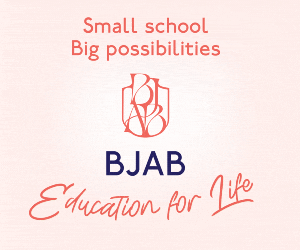A new solution for reading problems involves no reading at all, reports Alan Hope
“If a person does not rest his eye on a word for at least one third of a second he cannot read the word”
Two Israeli inventors have developed a system that can dramatically improve the reading abilities of children with dyslexia in only six weeks. But according to the man who’s trying to bring the system to market, conventional educators are offering “nothing but resistance”.
The BrightStar Reader was developed by Saul Kullok and his son Jose, and is a deceptively simple system using computer games to train children’s brains to overcome the basic problems which give rise to dyslexia, but which can also be used to tackle other learning difficulties involving reading. Oddly, perhaps, the computer games are designed not to be too exciting. Odder still, this solution to reading problems involves no reading at all.
LICENCE
 The technology, according to Hans Wackwitz, a Dutchman now living in Brussels who was so impressed by the system he bought the licence to market it, “is a feedback system which strengthens neural pathways between the two brain halves, and trains the eye to become more still. If a person does not rest his eye on a word for at least one third of a second he cannot read the word.”
The technology, according to Hans Wackwitz, a Dutchman now living in Brussels who was so impressed by the system he bought the licence to market it, “is a feedback system which strengthens neural pathways between the two brain halves, and trains the eye to become more still. If a person does not rest his eye on a word for at least one third of a second he cannot read the word.”
Wackwitz is a venture capitalist, but his interest in BrightStar arose from a more personal experience. “I got into it because my oldest son is dyslexic, though that’s a few years ago now. Because we live in Brussels, my son at age nine had to go to a specialised boarding school in the UK. When I finished high school my parents sent me to boarding school for a year because they thought I was too young for university. When I came out I said to myself, I will never send my children to boarding school. But I had to with my nine-year-old, and it broke my heart. He lived at the school for three years and only then I came in contact with this technology. In his third year, I brought the technology to the school, we put 30 kids through the process, and at the end of that year I could take him home.”
COMPUTER GAME
The technology was originally a package of computer software, but has now moved onto the Internet. The essence of the programme, however, hasn’t substantially changed. The game has two parts. In one, you try to steer a car along a winding road, while the software measures your accuracy. In the other, a grid of squares is lit up by a flashing light on which you need to concentrate, while a sign telling you to press (or not press) the space-bar appears from time to time, and your reaction time is measured. Both parts of the game are designed not to be as exciting as you might expect computer games for kids to be.
Remarkably, the developers claim the system can produce results in only eight 12-minute sessions. British Olympic swimmer Duncan Goodhew, who is vice-president of the Dyslexia Institute and has the condition himself, tried the system out and later declared: “Unless you have driven in fog, you don’t know what fog is like. Dyslexia is a bit like fog. I’ve had a massive improvement and I feel very comfortable from that point of view.”
Adults, then, may also benefit, although their brains are less flexible than those of children. “They are less plastic, but you can still teach an old dog new tricks,” says Wackwitz.
ADVANCEMENT
The results reported by the makers are impressive: children who have followed the system in controlled tests showed advancement of between seven and 18 months in their age-equivalency scores, depending on the reading scale used. But getting the scores is a lot simpler than convincing the educational establishment to adopt the technology.
“Yes, there has been resistance,” Wackwitz says. “Why? Because it’s at the crossroads between health, medicine and education, and all of those sectors are very, very conservative. Yes, there is resistance; remedial teachers for example see it as a threat. But we will get there, there’s no doubt.”







